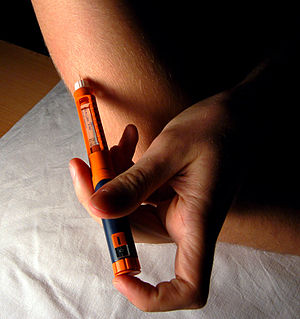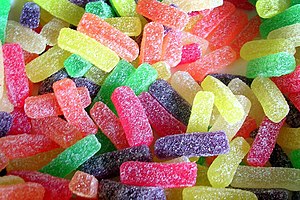Image may be NSFW.
Clik here to view. 1. Diabetics have to give up all sweets and desserts.
1. Diabetics have to give up all sweets and desserts.
Having a diagnosis of diabetes certainly does not mean that one has to forever give up their favorite desserts or sweet treats. However, these are foods that should be enjoyed less often and in smaller portion sizes since high-sugar desserts can cause blood sugars to become more elevated. A serving size of a brownie is a 2 inch x 2 inch square and the proper portion of ice cream is one scoop or ½ cup. Cakes and pies tend to be richer in carbohydrates and should only be enjoyed on special occasions.
2. You can eat as much as you want if it says “sugar-free.”
Sugar-free does not mean carbohydrate-free. Controlling carbohydrate intake is one of the most essential dietary modifications for diabetics to make. In efforts to reduce carbohydrate intake, many linger towards sugar-free products. These products may contain fewer carbohydrates than their regular counterparts, but they still do contain carbohydrates and portion sizes need to be monitored. One staple of my childhood summers was Schwann’s ice cream. Schwan’s no sugar added, fat-free vanilla ice cream sounds like a perfect healthy option, right? However, a ½ cup serving contains 19 grams of carbohydrates. One serving of the regular vanilla ice cream contains 15 grams of carbohydrates. For this particular example, the no sugar added variety actually contains more carbs than the regular version. This highlights the importance to always read food labels and to compare like-products when deciding on a brand/variety to purchase.
3. You will have to start taking insulin
When someone has diabetes, it means that their body; is not producing enough insulin or not efficiently using the insulin available in their body causing abnormal blood sugar levels. Sometimes diabetic medications are needed to help the body properly use the insulin that is currently available and better control one’s blood sugars. For some people, this is not enough and these individuals require insulin shots. However, many individuals can control their blood sugars simply by eating healthier, losing weight and increasing their physical activity levels.
4. I’m not obese; I won’t get diabetes.
Diabetes comes in all shapes and sizes. It’s important to have a yearly physical with your doctor to make sure you are not experiencing any early signs of diabetes. These can include:
- Urinating often
- Feeling extra thirsty or extra hungry
- Extreme fatigue
- Blurry vision
- Cuts/bruises that are healing poorly
- Tingling, pain, numbness in hands or feet
Image may be NSFW.
Clik here to view. 5. Diabetes is caused from eating too much candy.
5. Diabetes is caused from eating too much candy.
Type 2 diabetes has a strong family link but it can also be triggered by environmental factors such as obesity, eating habits, meal patterns and exercise habits. Being overweight is often caused from excessive calorie intake. Sugar-packed foods and beverages such as candy and soda are a common source of extra, unnecessary calories in the diet. Following a healthy diet that is rich in vegetables, fruits, lean proteins, low-fat dairy products, whole grains, beans, nuts/seeds and low in added fats and sugar can help reduce one’s risk for developing diabetes.
Image may be NSFW.
Clik here to view.
 Image may be NSFW.
Image may be NSFW.Clik here to view.
 Image may be NSFW.
Image may be NSFW.Clik here to view.
 Image may be NSFW.
Image may be NSFW.Clik here to view.
 Image may be NSFW.
Image may be NSFW.Clik here to view.
 Image may be NSFW.
Image may be NSFW.Clik here to view.
 Image may be NSFW.
Image may be NSFW.Clik here to view.
 Image may be NSFW.
Image may be NSFW.Clik here to view.


